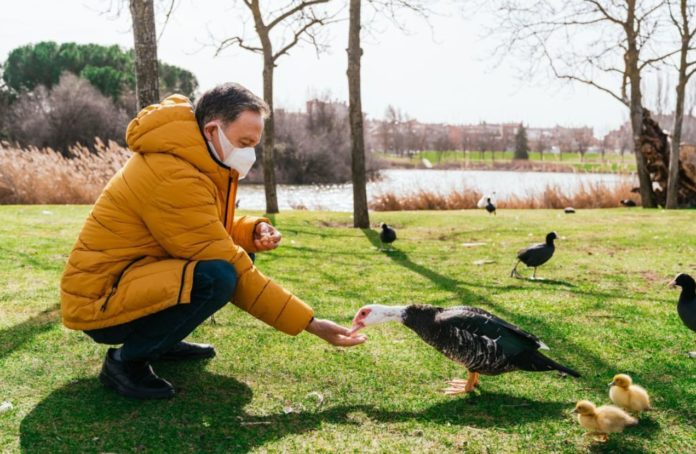As virus mutating in Animals can lead to new COVID variants spreading to Humans, CDC has revised its earlier guidlines.
The Centers for Disease Control and Prevention is now encouraging health officials to increase their efforts to periodically track the transmission of the virus in animals, citing concerns about novel coronavirus strains that are mutating in American wildlife and could transmit back to humans.
The CDC’s revised policy, which removes an earlier recommendation that state agencies “avoid routine animal testing,” comes as top officials from across the country have been meeting to strategize about the threat. It’s part of the CDC’s “One Health” project, which emphasizes how human health “is closely connected to the health of animals and our shared environment.”
It follows similar advice from the World Health Organization last month, which highlighted the threat posed by the virus prevalent among North American deer.
Antibodies to the virus were found in at least a third of white-tailed deer blood samples obtained by the Agriculture Department’s Animal and Plant Health Inspection Service (APHIS) in four states — Illinois, Michigan, New York, and Pennsylvania — in January.
Several additional efforts to research the virus’s spread in American wildlife have received funding from the EPA, including an effort to test rats near New York City’s sewer systems and wildlife near mink farms. Mink appear to be very vulnerable to the virus and have communicated it to people in some situations.
“These and other wildlife surveillance projects are important because scientists estimate that three out of every four new or emerging infectious diseases in people come from animals,” said Lyndsay Cole, an APHIS spokesperson.
According to Cole, the likelihood of animals transferring SARS-CoV-2 to humans is negligible, based on “limited information available.” APHIS, on the other hand, advised Americans to keep their families, including dogs, “a safe distance from wildlife and their droppings.”
Researchers in Canada recently discovered signs of “spillback” from deer — the virus migrating over to humans — with a highly mutated form in a report that has yet to be peer-reviewed.
“Given our current state of knowledge in the pandemic, we have updated CDC’s Evaluation for SARS-CoV-2 Testing in Animals to reflect that surveillance efforts are now critical for early detection and prevention of virus spillover from animals, especially wildlife, to people,” Jasmine Reed, a CDC spokesperson, said in a statement.
While this isn’t the first virus that public health officials have been trying to track and prevent from spreading between humans and animals, deer appear to be the only animals in North America that have propagated SARS-CoV-2 in the wild.
“We also are starting to see efficient deer-to-deer transmission. In other words, when deer get it, we’re seeing that it actually seems to adapt to the deer and that, because of their nature, in congregations together that they can actually spread,” added the University of Minnesota’s Jeff Bender.
As part of a study supported by the CDC and the Council of State and Territorial Epidemiologists, Bender led a pilot effort in Minnesota that tested hundreds of wild animals for SARS-CoV-2. Only white-tailed deer were found to be positive.
While isolated COVID-19 instances have been found in hundreds of animals across the country, ranging from domestic pets to zoo animals, APHIS has only found wild cases of SARS-CoV-2 spreading in deer in a nationwide tally.
“Who knows all the ways that SARS-CoV-2 got into deer? You and I could both make a list and they’d all be valid, either being in close contact with a deer, through feeding, or baiting, or farming of deer, as well as petting zoos. And just close contact people may have with deer in their yards,” Oregon’s state wildlife veterinarian and the vice chairman of the health committee for the Association of Fish and Wildlife Agencies, Colin Gillin said.
Gillin stated that he has been meeting with a group of experts from a variety of state and federal agencies, including the CDC and the Agriculture Department, to discuss possible new ways for tracking and responding to the virus in wildlife.
“There aren’t mandates on any of this, of course, because every state makes up its own decision. But they could take some of the tools or ideas from all these experts, and then look at the list as it relates to your state, and then decide to utilize something that came out of the committee,” added Gillin.
Based on the agencies’ modeling, states might change their surveillance or decide to put limits on the feeding or handling of wild deer, for example, Gillin speculated.
Bender, who previously served as the director of the United States Agency for International Development’s One Health Workforce Project, cited other diseases such as Ebola and West Nile Virus, in which a wide range of government agencies collaborate to find ways to reduce the risk of transmission between wildlife and humans.
“These types of projects really do require the strength and cooperation of the state and regional partnerships, and gets into that One Health concept,” Bender added.
According to Bender, experts have already started collaborating on strategies to decrease the possibility of SARS-CoV-2 spreading to animals, such as cleaning wastewater or vaccinating zoo animals, as well as public education.
Some governments have taken more drastic measures in response to outbreaks linked to animals held in captivity abroad.
Denmark began culling its farmed mink population in 2020. In January, Hong Kong ordered the euthanasia of thousands of hamsters and other tiny animals due to a record-breaking heat wave. However, as Bender points out, in wild animal populations, this isn’t really a choice.
“One of the things we don’t want to do, and we’ve seen historically in the past, is ‘oh, we’ll need to kill the wildlife.’ And that’s just really not a viable strategy,” he added.
Image Credit: Getty
You were reading: Now its “critical” to keep an eye out for new COVID mutations in wildlife – US CDC
